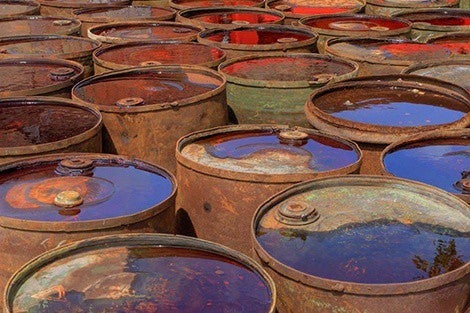In 1972, Anne Anderson’s life changed forever. Her 3-year-old son Jimmy, the youngest of her three children, was diagnosed with leukemia—and other children who lived nearby were suffering from leukemia, too. “Everywhere I went—to the library, to the church, to the grocery store—I met somebody who had a child with leukemia,” Anderson said. “That’s not normal.”
She was convinced the spate of disease had something to do with Woburn’s reddish, foul-smelling water, which people had complained about for years. “It was chlorinated so much, it smelled like the Y,” she said. “It rotted our pipes and faucets.”
Anderson started voicing her apprehensions—to the city, to the state, to the media. “It was hard, because I’m a very private person. Interviews and interviews and interviews, meetings and symposiums. Speaking in front of people was never my thing. But I was possessed.”
Her efforts set in motion a long and tortuous chain of events: city, state, and federal investigations; an HSPH study; and a court case made famous by Jonathan Harr’s book, A Civil Action, and the movie of the same name.
At first, the only people who put stock in Anderson’s fears were her mother and her best friend. Town leaders were reportedly insulting and insensitive; Massachusetts Department of Public Health officials were said to be unhelpful; neighbors didn’t want her to publicize her complaints about the water, because they were afraid their property values would sink.
Finally, in 1979, the state shut down two of Woburn’s municipal wells after discovering they were contaminated with industrial solvents. Jimmy Anderson died in January 1981—nine agonizing years after he first became sick.
Shortly after her son’s death, Anderson learned that two HSPH biostatisticians—Marvin Zelen, then-chair of the Biostatistics Department, and Stephen Lagakos—wanted to investigate whether there was a link between the contaminated water and the children with leukemia, and they wanted her help. At first she was reluctant. “I was so very raw,” she said. “But my minister, Reverend Bruce Young, told me, ‘If you don’t do it, who will?’”
Along with half a dozen Woburn volunteers, Anderson worked with Zelen and Lagakos in planning the study and making phone calls to gather data. “We had a very comfortable relationship of respect and friendship,” she said. “I admired the two of them so much.”
Using data from telephone interviews of 3,257 households, the researchers compared the percentage of water each household received from the contaminated wells over a 16-year period with a variety of adverse health effects, including leukemia. They found that the 15 Woburn children who had leukemia from 1969 to 1983 were exposed to an average of twice as much water from the contaminated wells as the average Woburn household. When the HSPH study revealed the correlation, said Anderson, “It was like a big weight was lifted off my shoulders.”
The School’s study findings also marked a turning point for the community. “That’s when the people of Woburn admitted that something was wrong,” said Anderson. “You know, you don’t mess with Harvard.” Today, she believes that people in general are much more aware of the threat of environmental contamination because of what happened in Woburn.
Anderson was devastated when she learned of Lagakos’ death in a car accident in 2009. She has nothing but praise for the two professors. “They were interested in little people with a big problem,” she said. “They listened to us. That meant so much.”
